
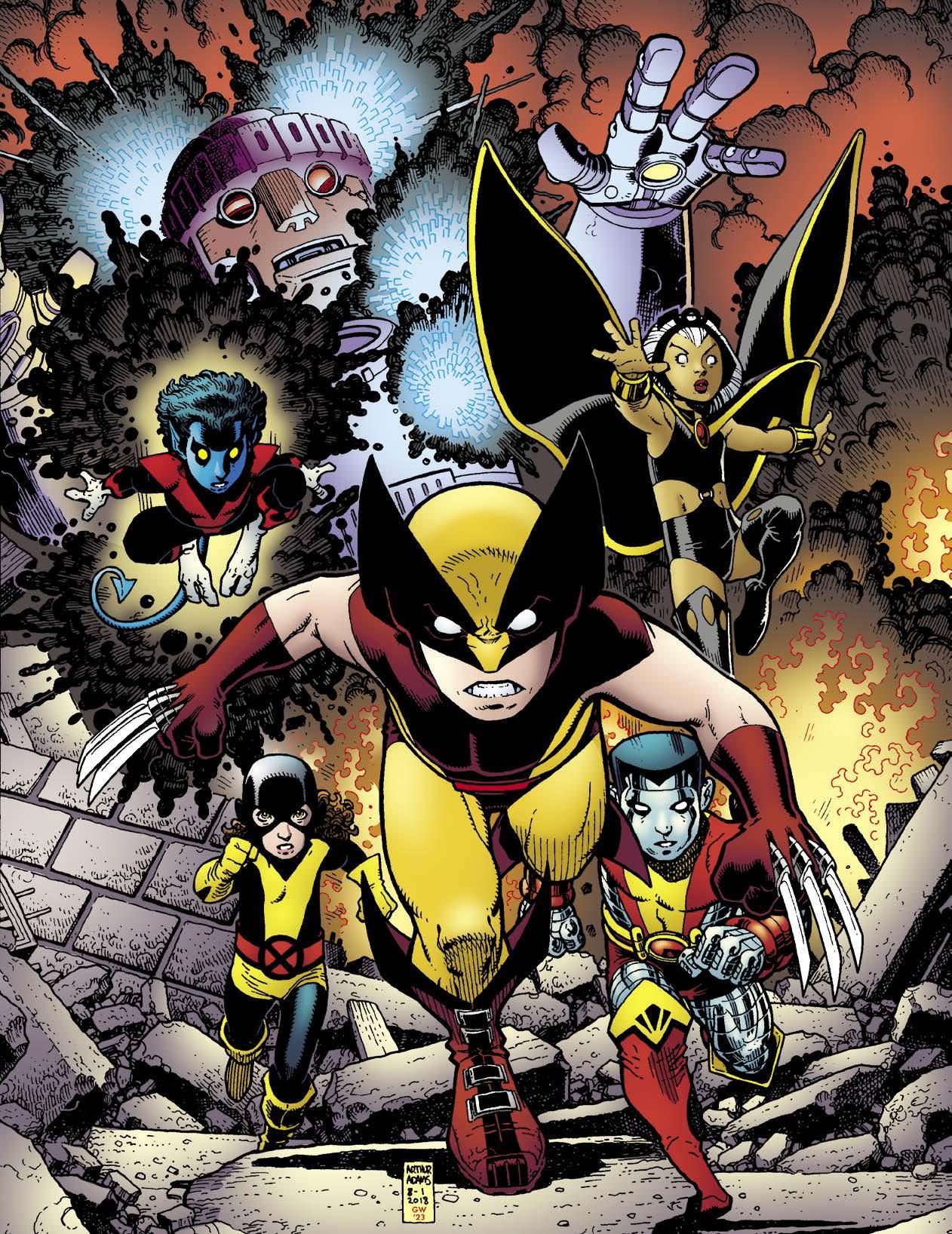
X-Men TM & © Marvel. All Rights Reserved. ™ No.153 August 2024 $10.95 Sugar and Spike • Franklin Richards • Superbaby Dennis the Menace • Marvel’s kid humor comics Baby Snoots • Harvey Comics & more MEET THE MARVELOUS MUTANT MOPPETS X-BABIES STOP YER CRYIN’! OUR BIG BABY ISSUE IS HERE!

“Greetings, creep culturists! For my debut issue, I, the CRYPTOLOGIST (with the help of FROM THE TOMB editor PETER NORMANTON), have exhumed the worst Horror Comics excesses of the 1950s, Killer “B” movies to die for, and the creepiest, kookiest toys that crossed your boney little fingers as a child! But wait... do you dare enter the House of Usher, or choose sides in the skirmish between the Addams Family and The Munsters?! Can you stand to gaze at Warren magazine frontispieces by this issue’s cover artist BERNIE WRIGHTSON, or spend some Hammer Time with that studio’s most frightening films? And if Atlas pre-Code covers or terrifying science-fiction are more than you can take, stay away! All this, and more, is lurching toward you in TwoMorrows Publishing’s latest, and most decrepit, magazine—just for retro horror fans, and featuring my henchmen WILL MURRAY, MARK VOGER, BARRY FORSHAW, TIM LEESE, PETE VON SHOLLY, and STEVE and MICHAEL KRONENBERG!”
(84-page FULL-COLOR magazine) $10.95 (Digital Edition) $4.99
#1 ships October 2024!
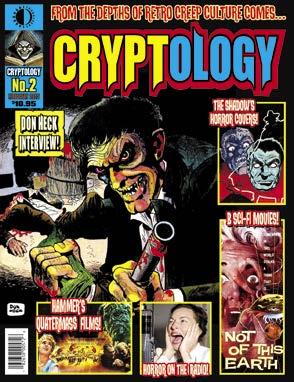
CRYPTOLOGY #2
The Cryptologist and his ghastly little band have cooked up more grisly morsels, including: ROGER HILL’s conversation with our diabolical cover artist DON HECK, severed hand films, pre-Code comic book terrors, the otherworldly horrors of Hammer’s Quatermass, another Killer “B” movie classic, plus spooky old radio shows, and the horror-inspired covers of the Shadow’s own comic book. Start the ghoul-year with retro-horror done right by FORSHAW, the KRONENBERGS, LEESE, RICHARD HAND, VON SHOLLY, and editor PETER NORMANTON
(84-page FULL-COLOR magazine) $10.95
(Digital Edition) $4.99 • Ships January 2025

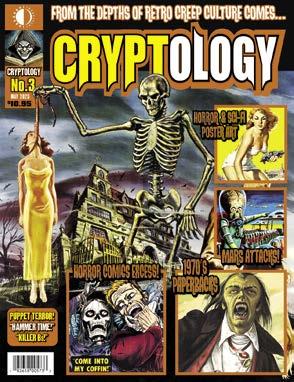
CRYPTOLOGY #3
This third wretched issue inflicts the dread of MARS ATTACKS upon you—the banned cards, the model kits, the despicable comics, and a few words from the film’s deranged storyboard artist PETE VON SHOLLY! The chilling poster art of REYNOLD BROWN gets brought up from the Cryptologist’s vault, along with a host of terrifying puppets from film, and more comic books they’d prefer you forget! Plus, more Hammer Time, JUSTIN MARRIOT on obscure ’70s fear-filled paperbacks, another Killer “B” film, and more to satiate your sinister side!
(84-page FULL-COLOR magazine) $10.95
(Digital Edition) $4.99 • Ships April 2025
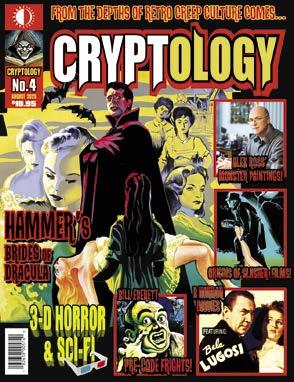
CRYPTOLOGY #4
Our fourth putrid tome treats you to ALEX ROSS’ gory lowdown on his Universal Monsters paintings! Hammer Time brings you face-to-face with the “Brides of Dracula”, and the Cryptologist resurrects 3-D horror movies and comics of the 1950s! Learn the origins of slasher films, and chill to the pre-Code artwork of Atlas’ BILL EVERETT and ACG’s 3-D maestro HARRY LAZARUS. Plus, another Killer “B” movie and more awaits retro horror fans, by NORMANTON, the KRONENBERGS, LEESE, VOGER, and VON SHOLLY!
Ships
(84-page FULL-COLOR magazine) $10.95 (Digital Edition) $4.99 •
July 2025
All characters and properties TM & © their respective owners.
TwoMorrows. The Future of Comics History. TwoMorrows Publishing 10407 Bedfordtown Drive Raleigh, NC 27614 USA 919-449-0344 E-mail: store@twomorrows.com Order at twomorrows.com Horror Four-issue subscriptions: $53 in the US $78 International $19 Digital Only
Satiate Your Sinister Side!
August 2024
EDITOR-IN-CHIEF
Michael Eury
PUBLISHER
John Morrow
DESIGNER
Rich Fowlks
COVER ARTIST
Arthur Adams (Art originally appeared as a variant cover for Return of Wolverine #1, Nov. 2018. Scan courtesy of Tiang Woon Meng.)
COVER COLORIST
Glenn Whitmore
COVER DESIGNER
Michael Kronenberg
PROOFREADER
Kevin Sharp
SPECIAL THANKS
Arthur Adams
Jim Amash
Mark Arnold
Terry Austin
Cary Bates
Bernie the Brain
Tom Brevoort
Dewey Cassell
Gerry Conway
Tom DeFalco
Addisyn Fowlks
Heritage Auctions
King Features Syndicate, Inc.
Ann Nocenti
Eric NolenWeathington
Joseph Norton
John Schwirian
Louise Simonson
Roy Thomas
John Wells
Marv Wolfman
Christopher Larochelle
Paul Levitz
Ed Lute
Alissa Marmol-Cernat
Marvel Comics
Tiang Woon Meng
BACKSEAT DRIVER: Editorial by Michael Eury
FLASHBACK: Franklin Richards: Marvel’s First Son
FLASHBACK: Me Am Superbaby .

mutants have got the mojo to keep coming back again and again

Volume 1, Number 153
C’mon citizen, DO THE RIGHT THING! A Mom & Pop publisher like us needs every sale just to survive! DON’T DOWNLOAD OR READ ILLEGAL COPIES ONLINE! Buy affordable, legal downloads only at www.twomorrows.com or through our Apple and Google Apps! & DON’T SHARE THEM WITH FRIENDS OR POST THEM ONLINE. Help us keep producing great publications like this one! Don’t STEAL our Digital Editions!
. . . . . . . . . . . . . . . . . . . . . . . . . . . . . . . . 2
3
been easy for Reed and Sue’s firstborn TERRY’S TOONS: Here’s Pie in Your Eye! . . . . . . . . . . . . . . . . . . . . . . . . . . . . . . . . . . . 15 Superstar artist Terry Austin ribs a beloved comics ad campaign BEYOND CAPES: The Last Days of Sugar and Spike . . . . . . . . . . . . . . . . . . . . . . . . . . 17 Whatever happened to cartoonist Sheldon Mayer’s talking toddlers? FLASHBACK: Harvey Comics in the Bronze Age . . . . . . . . . . . . . . . . . . . . . . . . . . . . . 37 Richie Rich’s not-so-hostile takeover of Harvey Comics’ publishing line BEYOND CAPES: Dennis the Menace Bonus Magazine . . . . . . . . . . . . . . . . . . . . . . . . 43 The cow-licked cut-up was no stranger to Bronze Age spinner racks BACK IN PRINT: Marvel’s Bronze Age Menaces 48 Meet Homer the Happy Ghost, Peter the Little Pest, and pals BEYOND CAPES: Baby Snoots . . . . . . . . . . . . . . . . . . . . . . . . . . . . . . . . . . . . . . . . . . . 57
Life hasn’t
Gold Key Comics’ precious pint-sized pachyderm
. . . .
. . . . .
. . . . . . . . . . . . . . . . . 62 The adventures of Superman when he was an infant WHAT THE—?!: Superbaby in Action Comics #466 65 If you thought the notion of a Superbaby was forgotten by the mid-1970s, think again FLASHBACK: X-BABIES . . . . . . . . . . . . . . . . . . . . . . . . . . . . . . . . . . . . . . . . . . . . . . . . . 69 Marvel’s mini
BACK TALK:
Reactions . . . . . . . . . . . . . . . . . . . . . . . . . . . . . . . . . . . . . . . . . . . 78 BACK ISSUE™ issue 153, August 2024 (ISSN 1932-6904) is published monthly (except Jan., March, May, and Nov.) by TwoMorrows Publishing, 10407 Bedfordtown Drive, Raleigh, NC 27614, USA. Phone: (919) 449-0344. Periodicals postage paid at Raleigh, NC. POSTMASTER: Send address changes to Back Issue, c/o TwoMorrows, 10407 Bedfordtown Drive, Raleigh, NC 27614. Michael Eury, Editor-in-Chief. John Morrow, Publisher. Editorial Office: BACK ISSUE , c/o Michael Eury, Editor-in-Chief, 112 Fairmount Way, New Bern, NC 28562. Email: euryman@gmail.com. Eight-issue subscriptions: $97 Economy US, $147 International, $39 Digital. Please send subscription orders and funds to TwoMorrows, NOT to the editorial office. Cover artwork by Arthur Adams. X-Babies, the X-Men, and Wolverine TM & © Marvel. All Rights Reserved. All editorial matter © 2024 TwoMorrows and Michael Eury. Printed in China. FIRST PRINTING Comics’ Bronze Age and Beyond! Big Baby Issue • BACK ISSUE • 1
. . . . . . . . .
. . . . . .
Reader

Better Put on Your Big Boy Britches
Young Franklin Richards faces a monstrous challenge in Fantastic Four Annual #14 (1979). Cover art—pencils and inks—by Joltin’ Joe Sinnott.
TM & © Marvel. Big Baby Issue • BACK ISSUE • 3
by
Franklin Richards: Marvel’s First Son Franklin Richards: Marvel’s First Son
Joe Norton
A New Addition
(right) 1968’s iconic FF Annual #6. (left)
From inside, the FF meets the newest member of the family! By the unmatchable Stan Lee/Jack Kirby/ Joe Sinnott.
TM &
Franklin Richards, son of Reed and Susan Richards
Mr. Fantastic and the Invisible Woman of the Fantastic Four—has had a storied life since his first appearance (and birth) in Fantastic Four Annual #6 (Nov. 1968). In the 56 years of his character’s life from infancy to his teen years, Franklin has been accelerated and then de-aged (twice), placed in a coma, served as an X-Man, been a freedom fighter in an alternate timeline (twice), been babysat by Agatha Harkness, and a god, with many stops in between. While placing children in dangerous situations and cliffhangers is a staple of the comics medium, certainly being the son of two superheroes meant a stressful life ahead for Franklin. But it wasn’t only the demands of the storytelling that exposed Franklin to danger, it was the ever-changing stable of creators that struggled to find a specific role for the child. Each character eventually settles into a stereotype or two (Johnny Storm is the hotheaded teen
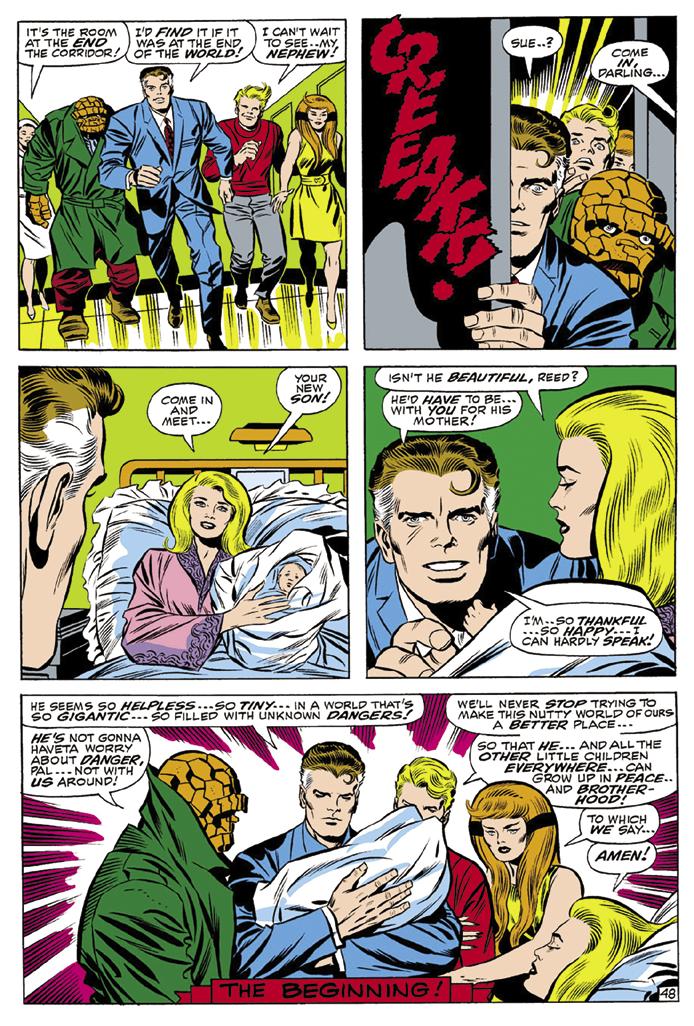
Stuck in the Middle with You
(opposite page) Bashful Benji Grimm gets an ego boost when learning newborn
Franklin’s middle name. Lee/Kirby/Sinnott in original art form, courtesy of Heritage Auctions (www.ha.com), from Fantastic Four #94 (Jan. 1970).
TM
rebel, Peter Parker is the down-on-his-luck underdog) and all stories build off those traits. Franklin never got a chance to establish himself as a stereotype, and consequently never really took off as a character despite being a member of Marvel’s First Family and playing a part of so many major Marvel storylines over the years (“Heroes Reborn” and “Days of Future Past,” to name two).
Creators had no real template for Franklin and, as you will see in this article, did what they wanted, either completely ignoring what came before or benching him—with the exception of character defining run in another family team’s book. Which is unfortunate, as no character was better positioned for a long and exciting comic book life than Franklin Richards.
WHAT TO EXPECT IN YOUR BABY’S FIRST YEARS
Franklin’s birth was as exciting as you’d expect. Already aware that the cosmic rays that created the Fantastic Four are jeopardizing both mother and child, Reed takes Johnny and Ben into the
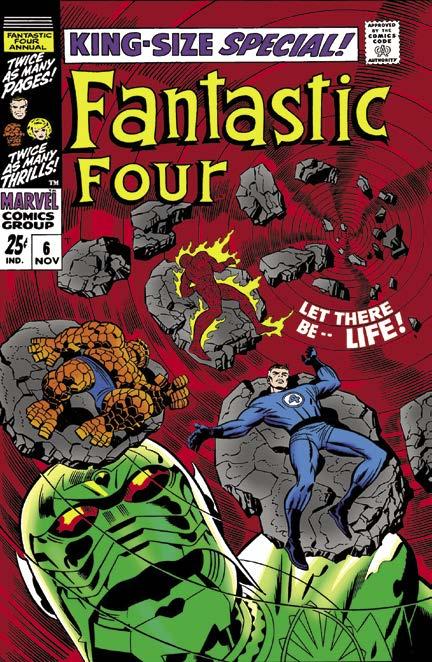
4 • BACK ISSUE • Big Baby Issue
© Marvel.
& © Marvel.
Uncanny Nanny Yikes! Readers— and the FF—meet
Agatha Harkness, in Fantastic Four #94.
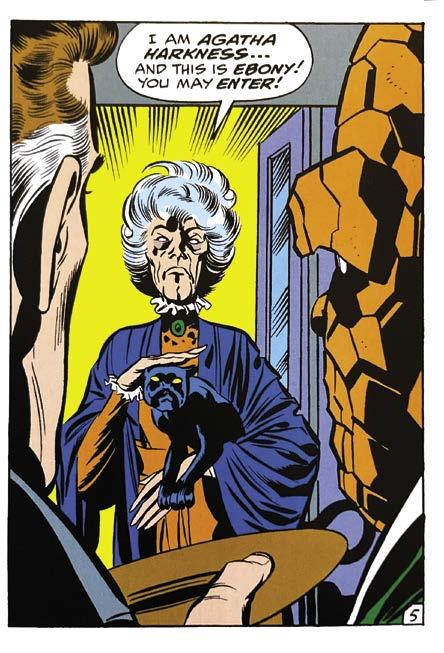
Negative Zone and battles Annihilus for the Cosmic Control Rod in order to… you get the drift.
With typical Silver Age Kirby/Lee bombast, Reed saves the day and Sue gives birth to a healthy boy. The baby is named Franklin Benjamin Richards in FF #94 (Jan. 1970), and in a nod to the dangers of being the son of two adventurers, given a nanny in Agatha Harkness (who herself exposes him to more danger, as we will soon find out). Having a name and a nanny were about the only normal parts of childhood Franklin would ever have. The first glimpse of Franklin’s ever-changing and ever-nebulous powers came in FF #130 (Mar. 1971) when, with a twinkle in his eye, he seems to wake up his incapacitated Uncle Ben, allowing him to free himself from the Frightful Four’s Trapster’s grasp. This is described unknowingly by Ben as “I feel like somebody’s inside my head an’ marchin’ through it.”

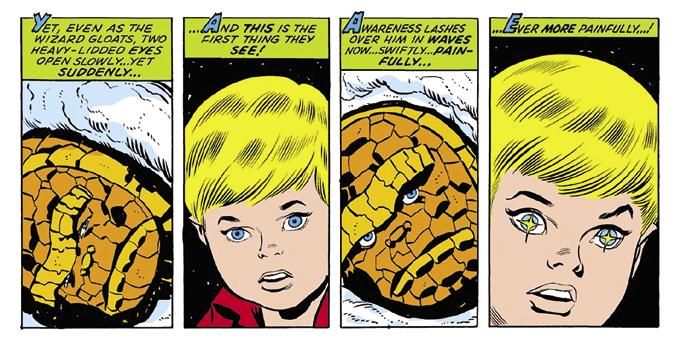
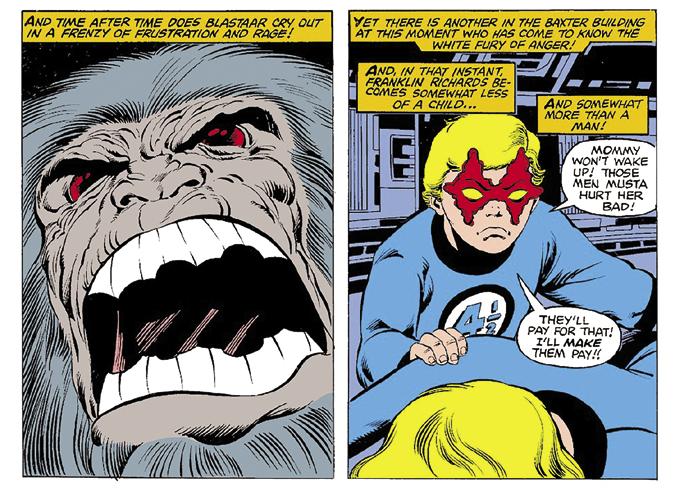
Writer Roy Thomas gave Franklin some vaguely telepathic powers. Unsure of where the character was going at this point, Thomas tells BACK ISSUE, “I think there are zillion different gradations of ways the situation could have been handled, many of them equally valid.” At the beginning of his time as an active supporting character, creators had no read on Franklin yet.
Following up on Thomas’ lead, writer Gerry Conway, who penned the Fantastic Four from issue #133 to 152 (Apr. 1973–Nov. 1974), started to seed Franklin’s burgeoning power into the storyline until it finally grew to world-ending strength, attracting the attention of Annihilus, who attempted to harness that energy himself. Reed uses some of his patented Richards-tech and incapacitates Franklin before his power grows too strong, forcing the boy into a coma so Reed can figure out how to save his son. This family trauma begins another split in the FF’s membership, this one having Sue file for divorce. This is resolved after a mental attack by Omega and Ultron in FF #150 (Sept. 1974), when Franklin’s mental power is reawakened and he delivers a deus ex machina telepathic blast that defeats the villains and drains his own power to a safe level, resetting the board for new creators.
When asked about his time with Franklin, Conway states, “To me, he was a thematic device more than a person, not having kids of my own at that point in my life. That’s probably why I had Reed put him in a coma.” Conway introspectively concludes, “I’d probably be much more interested in him today, and certainly wouldn’t treat him as cavalierly as I did.”
This Kid’s No Pushover (top)
An early glimpse at li’l Franklin’s burgeoning power, from Fantastic Four #130 (Jan. 1973). (bottom) A vengeful Franklin powers up and prepares to give Blastaar the what-for. From FF #216 (Mar. 1980).
6 • BACK ISSUE • Big Baby Issue
TM & © Marvel.
TM & © Marvel.
roy thomas
IMDb.com.
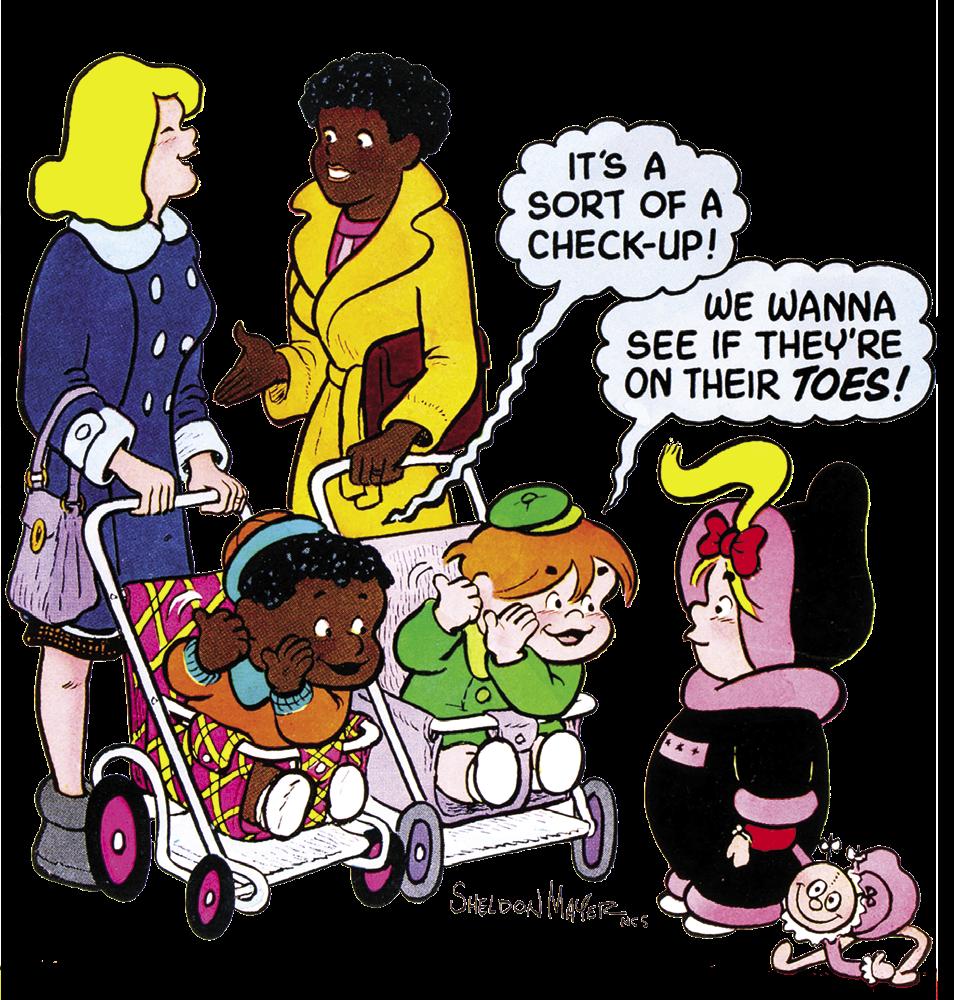
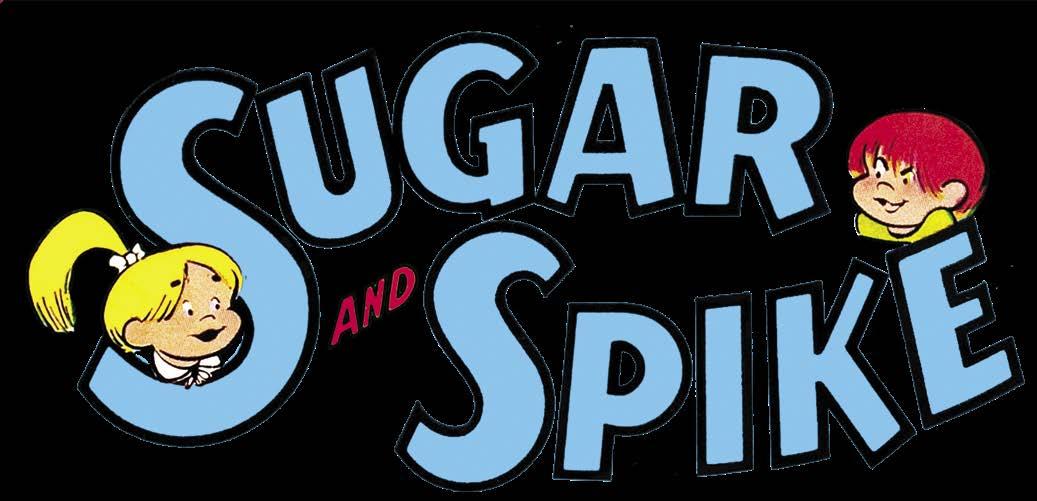 by John Wells
by John Wells
New Kid on the Block
One of DC’s earliest African-American characters was Raymond, introduced by cartoonist Sheldon “Shelly” Mayer as a supporting cast member of Sugar and Spike with issue #94 (Feb.–Mar. 1971). Unfortunately, the addition of Raymond did not keep the series from being cancelled soon thereafter.
Big Baby Issue • BACK ISSUE • 17
TM & © DC Comics.
TM
Look Who’s Talking
(left) Mayer launched his chatterbox children’s adventures in Sugar and Spike #1 (Apr.–May 1956). His other creation for DC Comics, The Three Mouseketeers, got a 1970 revival as a reprint title which included an additional collection of oldies in (right) Super DC Giant #S-18. Cover by Phil Mendez.
[
Author’s note: The quotes from Sheldon Mayer and his daughter Merrily Mayer Harris in the following article—unless otherwise specified— come respectively from their interviews with Anthony Tollin in 1975’s Amazing World of DC Comics #5 and Bill Alger in 2001’s Comic Book Artist #11. The latter interview is also the source of the anecdotes in paragraph one.]

The baby was stillborn. In a Harlem room on April Fool’s Day 1917, the boy’s grandmother desperately swaddled the lifeless body first in wet cold towels and then warm ones until her prayers were answered. The baby grew up to be man and, likely when he was in his 20s, his doctor diagnosed him with terminal cancer. “You’ll feel fine for a while,” the medic told him. “Just live.” Suffering in silence with his death sentence, the young man eventually learned that there had been a mistake. His blood test had been mixed up with someone else’s and he was perfectly healthy. The fragility and wonder of life would never be lost on Sheldon Mayer.
Working as an assistant to cartoonist Ving Fuller at the age of 14, Mayer found early employment in the nascent comic book industry. Along with pro-
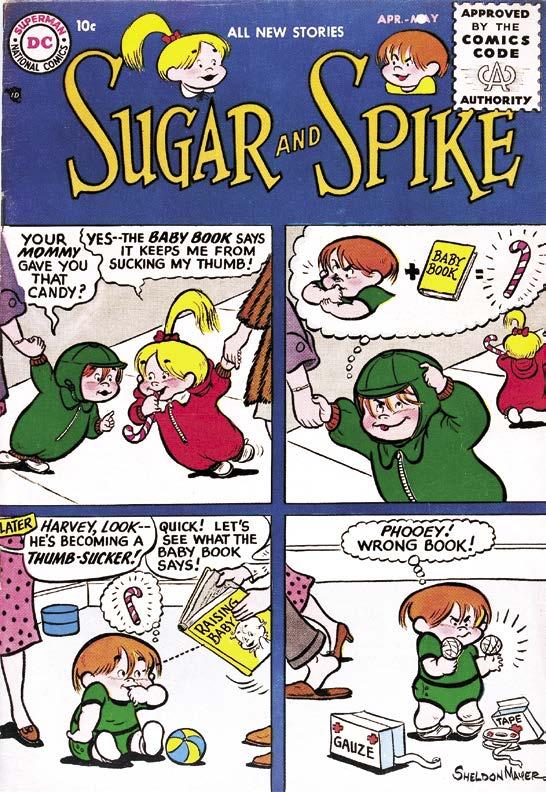
ducing the adventures of teen cartoonist Scribbly, the young man also changed the course of history by successfully arguing that an oft-rejected feature called “Superman” ought to be published in a new title called Action Comics. Tiring of the editorial grind that included oversight of the likes of Wonder Woman, the Flash, and Green Lantern, Mayer stepped down in 1948 to return to his first love of cartooning.
Observing in the mid-1950s that humor titles “had been counting too much on gags and not enough on character development and human interest,” the cartoonist was tasked by National Comics [a.k.a. DC Comics] President Jack Liebowitz to come up with two new books. Mayer delivered The Three Mouseketeers (a reconceived version of a 1940s feature) but struggled to develop a kids comic “to compete with the rash of Dennis the Menace imitations that were then flooding the market.”
Dennis the Menace cartoonist Hank Ketcham had found inspiration in his real-life son, but Mayer’s kids were nearly teenagers. Pulling out silent movies of daughter Merrily and son Lanney as tots in the 1940s, the cartoonist “observed that they seemed to be communicating with each other. On this silent film, you would swear they
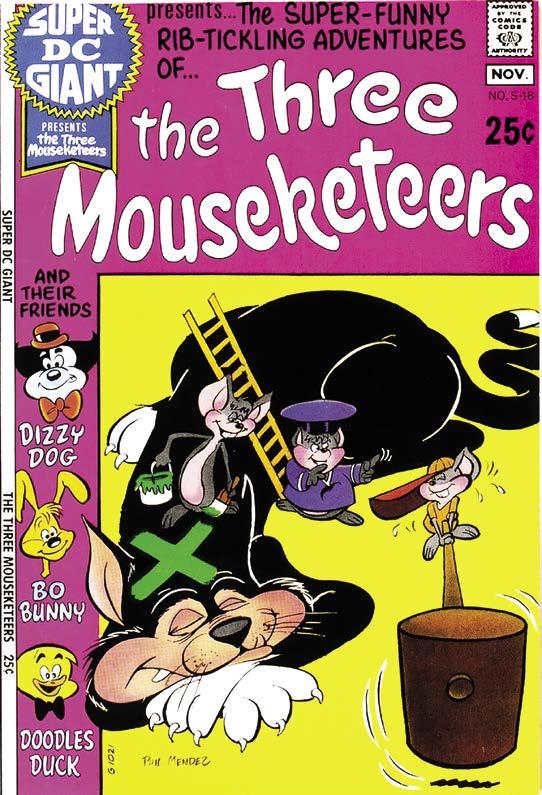
18 • BACK ISSUE • Big Baby Issue
TM & © DC Comics.
sheldon mayer
Self-portrait from Sugar and Spike #85.
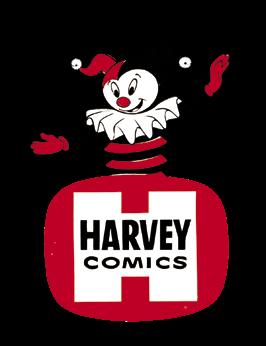

Comic book titles and characters experience peaks and valleys in terms of popularity. Harvey Comics in the Bronze Age was no different. While there was nothing really specific to signify the beginning and the end of the Bronze Age at Harvey Comics, it seems that the true beginnings of the heavy Richie Rich expansion began in 1971 just after the Bronze Age started. By 1985 when the Bronze Age completed, the entire original Harvey Comics company had already imploded in 1982 before being resurrected in 1986 by younger family members, and then sold off three years later to outside investors.
by Mark Arnold
During this Bronze Age for Harvey, while Richie Rich expanded its line, many other long-running titles and characters were cancelled or at the very least, reduced to a bimonthly schedule and a shrinking page count. The largest implosion occurred from 1974–1976, with the cancellation of many titles featuring Casper, Hot Stuff, Little Audrey, Little Dot, Little Lotta, Nightmare, Sad Sack, Spooky, and Wendy.
Probably the best way to tackle this subject is to explain the rise and fall of each character through their comic book publishing history. Traditionally, the sign of a successful title or character for any publisher was to create a spinoff title. For example, at DC, Action Comics begat Superman ; Detective Comics begat Batman ; and both of those begat New York World’s Fair Comics , which became World’s Best Comics and finally, World’s Finest Comics
Harvey Comics practice of spinning off titles was an early occurrence for the company, with the first such spinoff title being The Black Cat, spinning off of Pocket Comics and later Speed Comics in June 1946.
Next, Joe Palooka Comics spun off Humphrey Comics in October 1948 and Little Max Comics in October 1949. Blondie Comics begat Dagwood Comics in September 1950 and Daisy and Her Pups in June 1951. Also in June 1951, Nutty Comics became Rags Rabbit
The Harvey characters that were awarded their own titles and respective spinoffs during the Silver and Bronze Age include Baby Huey, Buzzy, Casper, Gabby Gob, the Ghostly Trio, G.I. Juniors, Herman and Katnip, Hot Stuff, Jackie Jokers, Little Audrey,
The Gang’s All Here (But Not for Long…)
Harvey Comics’ pantheon is well represented in this detail from Warren Kremer’s cover art for AstroComics #1, an American Airlines giveaway title featuring Harvey reprints. Despite flying high in this visible format, Casper and company’s popularity began a slow slide during the Bronze Age.
© Classic Media, LLC.
Big Baby Issue • BACK ISSUE • 37

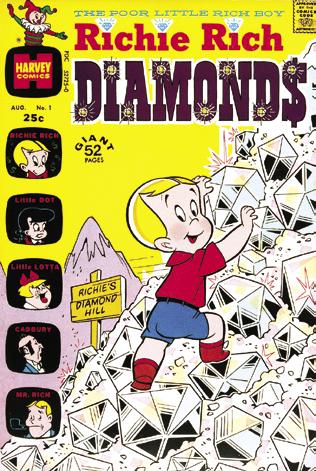

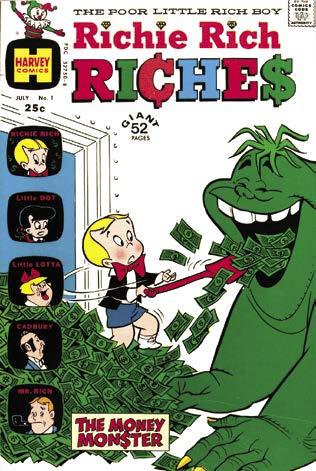

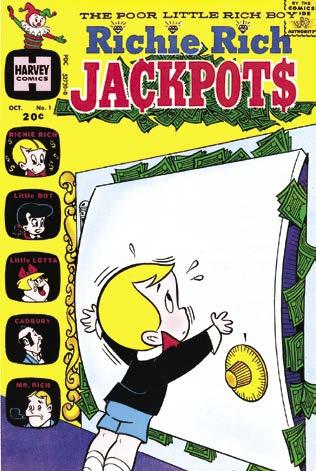
An Embarrassment of Richies
Harvey’s poor little rich boy may have been a minor character in his early days, but beginning in the early 1970s Richie Rich spinoffs became common—including these first issues: (top) Richie Rich Fortunes #1 (Sept. 1971) and Richie Rich Riches #1 (July 1972); (center) Richie Rich Diamonds #1 (Aug. 1972) and Richie Rich Money World #1 (Sept. 1972); (bottom) Richie Rich Bank Book #1 (Oct. 1972) and Richie Rich Jackpots #1 (Oct. 1972).
Little Dot, Little Lotta, Muttsy, Nightmare, Richie Rich, Sad Sack, Spooky, Stumbo, and Wendy.
Sad Sack Comics was the first series that eventually got incorporated into the Harvey world. Starting out as a pantomime strip in 1942, Sad Sack began at Harvey in September 1949 as a pantomime civilian strip. He soon returned to the Army with the 22nd issue in February 1953, and with that, Sad Sack also began to speak.
Although other newspaper reprint strips got their own titles at Harvey like Blondie, Dick Tracy, and Joe Palooka , those stars tended to stay separate from the other characters in their own universes. Not so for Sad Sack, who eventually crossed over with Casper, Richie Rich, and others.
Over time, due to his ongoing popularity, Sad Sack Comics spun off into Sad Sack’s Funny Friends (Dec. 1955); Sad Sack and the Sarge (Sept. 1957); Sad Sack Laugh Special (Winter 1958); Sad Sack’s Army Life Parade (later called Sad Sack’s Army Life Today) (Oct. 1963); Little Sad Sack (Oct. 1964); Sad Sad Sack World (also Oct. 1964); Sad Sack Navy Gobs and Gals (Aug. 1972); Sad Sack with Sarge and Sadie (Sept. 1972); Sad Sack U.S.A. (Vacation) (Nov.1972); and Sad Sack Fun Around the World (1974).
Most of these spinoffs were cancelled by 1976. During the final years of the original Harvey company, only Sad Sack Comics and Sad Sack and the Sarge were published regularly through 1982.
Gabby Gob, G.I. Juniors, and Muttsy were all Sad Sack character spinoffs that were all part of the Harvey Hits (1957) series. None ever got their own title, although Gabby Gob was later a star of Sad Sack Navy Gobs and Gals in 1972.
Meanwhile, after Harvey got the rights to publish the characters in 1952 from St. John Publishing, they quickly resumed publishing Little Audrey with issue #25 (Aug. 1952) and Casper, the Friendly Ghost with issue #6 (Oct. 1952), and added a third title called Paramount Animated Cartoons, which debuted as Harvey Comics Hits #60 (Sept. 1952).
These three titles continued through 1956, when Harvey acquired the Famous Studios characters from Paramount Pictures. Paramount Animated Cartoons became Baby Huey, the Baby
38 • BACK ISSUE • Big Baby Issue
© Classic Media, LLC.

Fawcett’s 1970-1979
Dennis the Menace Bonus Magazine
by Ed Lute
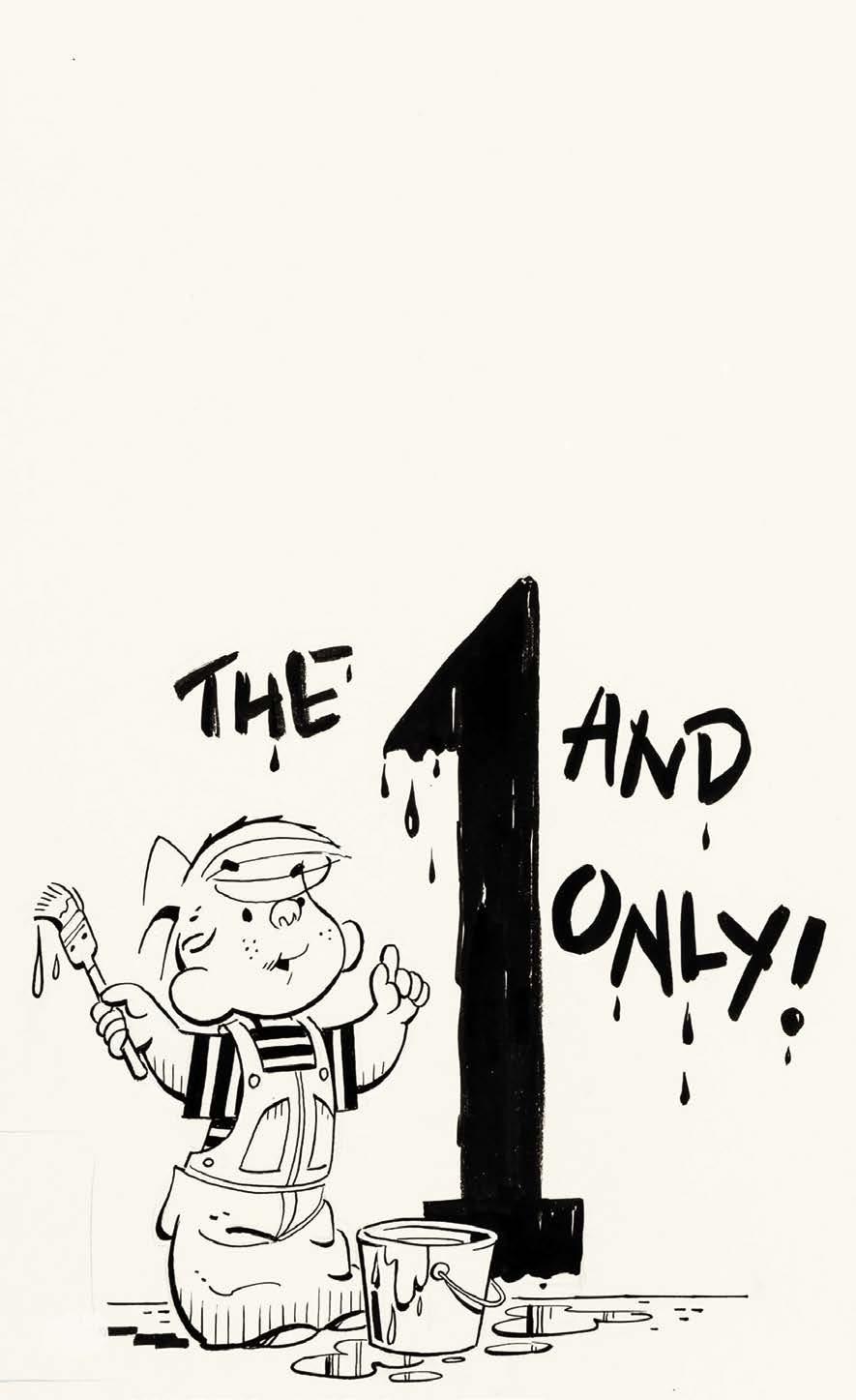
Everyone’s Favorite Troublemaker
When it comes to imps, there’s no menace we love more than Dennis, and this original art from the Hank Ketcham Studio proudly touts his top-dog status. Produced as the cover for Fawcett’s Dennis the Menace Bonus Magazine Series #187, from 1979. Courtesy of Heritage Auctions (www.ha.com).
Dennis the Menace © North America Syndicate. Big Baby Issue • BACK ISSUE • 43
TM
famously as a long-running television series starring Jay North as the title character. The TV series originally ran from October 4th, 1959 until July 7th, 1963, but could regularly be seen in reruns for decades. In 1993, a big-budget Warner Bros. movie starring Mason Gamble as Dennis and Walter Matthau as Mr. Wilson hit the screens, showing that even decades after his debut, this pint-sized troublemaker was still huge.
Like many other popular comic strips, Dennis also made his way into the comic book format on several occasions. One of his longestrunning series was the reprint book Dennis the Menace Bonus Magazine from Fawcett; it ran for almost 100 issues.
However, Dennis the Menace Bonus Magazine didn’t start out with that name. It also didn’t start as a reprint book, instead following a winding road to get to that title and format. BACK ISSUE takes a look at the history of this book as well as the contents to show why it remained a popular reprint title for longer than some books containing new materiel.
DENNIS THE MENACE GIANT SPECIALS
The comic book that would eventually become Dennis the Menace Bonus Magazine started off as Dennis the Menace Giant Summer Special and Dennis the Menace Winter Special . Both of these 100-pagers were published in 1954, but they weren’t just reprints of the one-panel comics that appeared daily in newspapers. These comics contained stories that varied in length from four to eight pages, “allnew stories” as proclaimed on the covers. Publisher Standard Comics was formed by Noah Lewis “Ned” Pines. Pines also published comics under the Better, Nedor, and Pine Comics imprints.
The next issues of Dennis the Menace Giant Specials were published under the Pine Comics imprint in 1955. As with the two previous specials, these new titles were published twice a year with one a summer vacation and the other a Christmas issue. Unlike the previous issues, these were numbered. Issues #2, 4, and 6 were published as Giant Vacation Special s. Issues #3 and 5 were Giant Christmas Special s. These contained 100 pages each and featured new stories. The sixth issue proved to be a popular one. It was a tribute issue to the then-recently added 50th state, Hawaii. It received several printings from Pine Comics as well as Fawcett when they obtained the Dennis the Menace license.
As with many titles of the time, there were not any creator credits listed other than Hank Ketcham’s name on the covers. Although these comics were not single-paneled like the daily newspaper strip, they contained the same type of humor, with Dennis causing problems for his parents and neighbors. Dennis’ pal Joey, dog Ruff, and gal pal Margaret were also featured prominently in the comic.
The title made its way to Fawcett Comics with a new #6 (Dec. 1957). It initially kept the
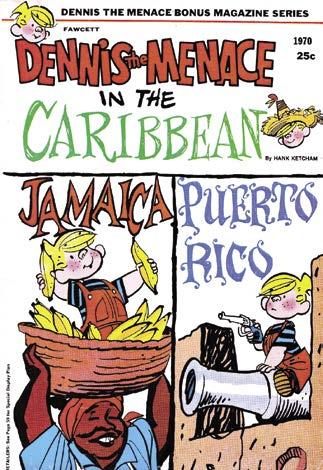

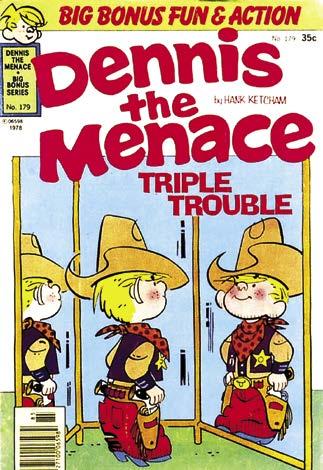
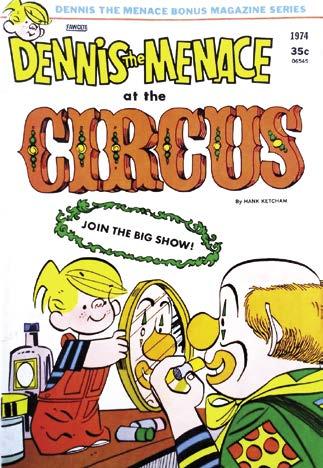
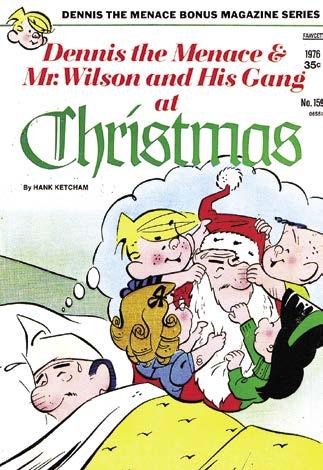
Groovy Grab-Bags of Dennis-dom
Themes for Dennis the Menace Bonus Magazine/Big Bonus Magazine varied with each issue, but no matter the subject, readers could always count on family fun. Covers for (top) issues #76 (Jan. 1970) and 129; (center) #145 (Aug. 1976) and 156; and (bottom) #179.
© North America Syndicate.
Big Baby Issue • BACK ISSUE • 45
by Dewey Cassell
Double Trouble
(left) No relation to Spider-Man’s alter ego, Peter, the Little Pest #1 (Nov. 1969) was an odd entry to Marvel’s late Silver Age/early Bronze Age lineup. That cover’s art was altered from (right) artist Joe Maneely’s cover to the series’ source material, the oldie Melvin the Monster #5 (Nov. 1956).
Lather. Rinse. Repeat.
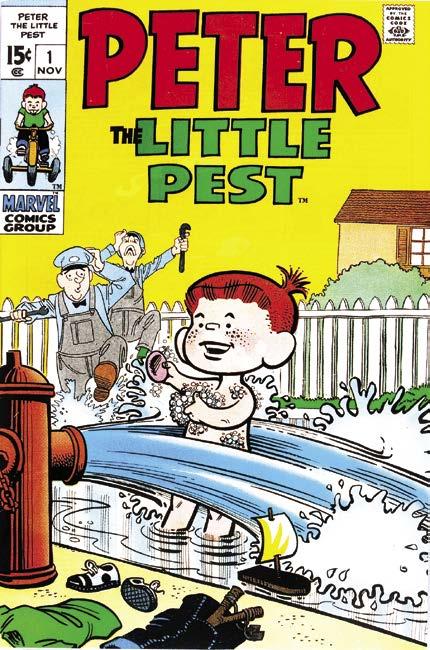
For years, those are words you could find on virtually every bottle of shampoo. Is it because your hair is so dirty that it needs to be washed twice? Probably not, but it does sell more bottles of shampoo.
Comic books have had a similar strategy over the years, only the words are different: Read. Reprint. Repeat.
Its origins lie with the earliest of comic books, which began as reprints of newspaper strips. As comics began to feature new material, publishers looked for ways to leverage their investment. Over the years, comic stories would be reprinted in annuals, specials, digests, and trade paperbacks. Comic stories were also reprinted in foreign editions. Warren Publishing, known for its horror magazines like Creepy, Eerie, and Vampirella, would sometimes have the word balloons pasted onto acetate overlays, so the same artwork could be reused with a different script. Reprinting was a popular path to profitability.
In the late 1960s and early 1970s, Marvel expanded its line of comics into a variety of new genres to reach a broader
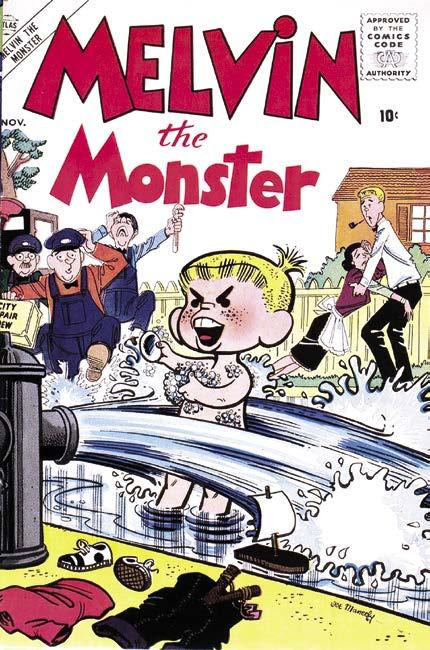
audience. For example, they produced several comic books targeted at female readers, like Night Nurse , Shanna the She-Devil , and The Cat . They catered to the sword-andsorcery crowd with Conan the Barbarian . And, in addition to trying out new stories, they made a concerted effort to leverage their substantial catalog of older material. This included reprinting vintage horror stories in titles like Beware! , Crypt of Shadows, and Uncanny Tales. Marvel did the same thing with the romance comics Our Love Story and My Love , which were launched with new material but which soon began to include reprints from classic titles of the 1940s and 1950s. And they used the same approach with comics for kids.
When it came to profitability for comic book publishers, a close second to reprinting was imitation. If one publisher found success with a character, rest assured the racks would soon be full of knockoffs from all the other publishers. Interestingly enough, most of the copying—even when blatant—was taken in stride, with the notable exception of one red-caped fellow.
48 • BACK ISSUE • Big Baby Issue
TM & © Marvel.
by John Schwirian

Just past the Scarewood Forest lies the town of Trunksville, USA. There, at 711 Maple Street, you will find the home of the Elephant family: Elbert Elias Elephant (better known as Papa Dear), his wife Mama Dear, their son Baby Snoots, and “houseguest” Uptite Mouse. Baby Snoots and family entertained children four times a year for 22 issues from 1970 to 1975 as one of the few company-owned properties at Gold Key Comics.
Out of approximately 500 comic titles printed by Gold Key, only 5% were not licensed properties. Gold Key Comics, an imprint of Western Printing and Publishing, relied heavily on established characters from live-action television shows, movies, and animated features from studios like Walt Disney, Looney Tunes, and HannaBarbera. While the use of highly recognizable characters resulted in higher sales, licensing fees cut into the profits from these comics. In 1966, Charlton Comics won the contract to Popeye and the rest of King Features and, in 1970, likewise took a large part of the HannaBarbera characters for various Charlton titles. With Marvel and DC flooding the market, Gold Key needed to find a way to stay competitive. Between 1967 and 1973, Gold Key launched 13 new series wholly owned by Western Publishing. While these comics sold well, Western failed to license these characters to other markets, a revenue source that boosted profits at Marvel and DC. Therefore, when 1975 proved to be a rough year for the comics industry, Gold Key began dropping marginal titles and, by the start of 1979, had cancelled all house properties as well as its formerly highly successful digest line.
We can thank editor Chase Craig for many of these titles. According to his obituary, printed in a Ventura County, California, newspaper, “He created many originals for the Gold Key line such as The Little Monsters, Baby Snoots, The Jungle Twins, and Magnus Robot Fighter. In each of these comics, he worked closely with his staff of writers and artists to maintain the highest possible standards of quality.” Baby Snoots was inspired by the Fanny Brice character Baby Snooks, a child persona Brice first performed in vaudeville in 1912. She later used the character on stage and film, but it worked best on the Baby Snooks radio show (running from 1944 to 1959). While Baby Snooks was a rambunctious troublemaker, she was not mean-spirited or obnoxious.
Aside from the names and the personalities for Baby Snoots’ parents, the concept for Baby
Pint-sized Pachyderm
Baby Snoots #1 (Aug. 1970), from Western Publishing’s Gold Key Comics, one of a handful of series created and owned by Western. Cover artist unknown (although there are theories… keep reading!).
Big Baby Issue • BACK ISSUE • 57
by John Wells

And You Thought
Your Toddler Was a Handful… Detail of Li’l Kal-El/ Clark Kent— DC Comics’ Superbaby!—from the cover of Superboy #112 (Apr. 1964). Art by Curt Swan and George Klein.
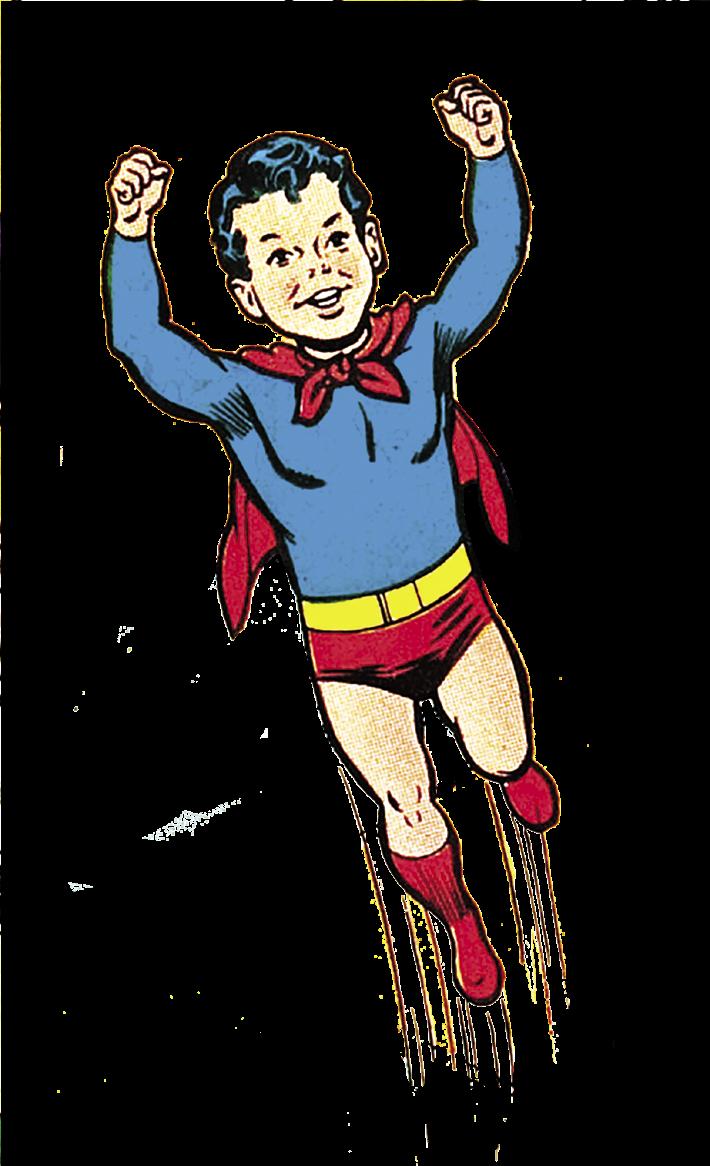
The premise was there almost from the start. Jerry Siegel and Joe Shuster’s vision of an infant waving furniture over his head appeared three panels into 1939’s Superman #1, echoed five years later, in 1944, in More Fun Comics #101’s first Superboy tale. By the time Superman’s origin was revisited in 1948’s Superman #53, the orphanage sequence had been expanded to seven panels of destructive hilarity. The concept of a Superbaby was comedy gold.
Indeed, writer Alvin Schwartz and artists Wayne Boring and Stan Kaye had already played with the idea in the Superman newspaper feature. A Sunday sequence running from October 1947 through January 1948 found atomic radiation reducing the Man of Steel to infant-size, with “Superbabe” adopting a new costume until the effects wore off. The story seems to have been intended as a stealth promotion for a licensed
Superbabe doll that was offered to select retailers that fall as a prospective Christmas gift.
Superboy #8 (May–June 1950) brought the concept to comic books. Writer Bill Finger (joined by artists Curt Swan and John Fischetti) recalled “When Superboy Was a Superbaby,” taking a subdued approach to the idea. In this account, the infant Clark Kent’s powers didn’t truly manifest until he was one year old, and his vocabulary was limited to a few stray words. The Tot of Steel’s first big adventure found him innocently thwarting a gang of jewel thieves.
Finger also included the crucial detail that Ma Kent fashioned a red and blue playsuit out of the baby’s impervious Kryptonian blankets since he wore out Earthly clothing so quickly. Superboy #26’s (June–July 1953) cover-featured sequel (“The Super-Tot of Smallville”) used a verbal shorthand to convey little Clark’s toddler state of
TM & © DC Comics. 62 • BACK ISSUE • Big Baby Issue
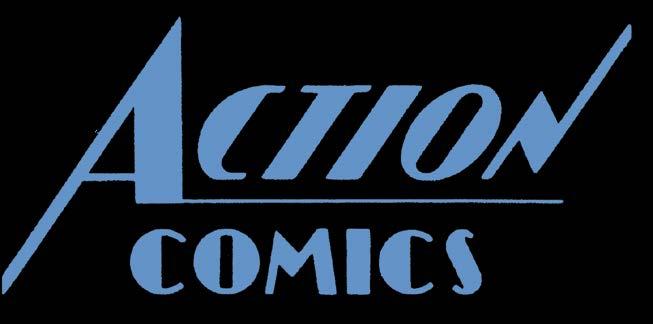
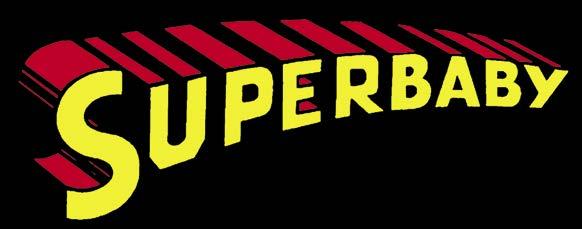 by Alissa Marmol-Cernat
by Alissa Marmol-Cernat
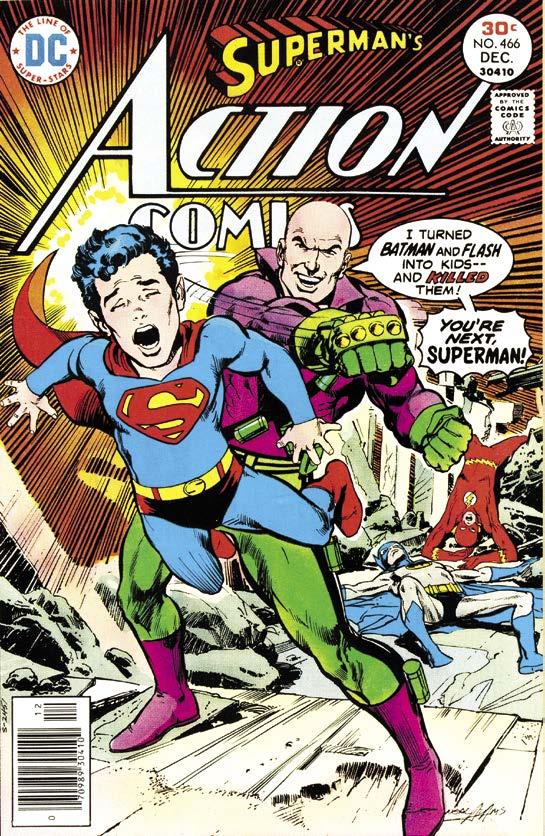
Past the height of that first wave of superheroics we now know as the Golden Age of Comics, stories featuring aged-down versions of pre-existing characters briefly became all the rage in an attempt to appeal to younger readers… and DC’s mainstay books were no exception. It was a transitional period for the industry and in keeping up with the times, the Silver Age saw the introduction of Wonder Girl in Wonder Woman #105 (Apr. 1959) and that of Wonder Tot in #122 (May 1961), the girl Superbaby in Action Comics #260 (Jan. 1960), and Bat-Baby in Batman #147 (May 1962). In fact, beloved heroes were getting de-aged all over the place, with the Legion of Super-Babies showing up in Adventure Comics #338 (Nov. 1965), and even Ma and Pa Kent getting the youngster treatment in Superboy #145 (Mar. 1968).
However, by the mid-1970s, the trend had long come and gone and heroes had matured along with their audiences—or so it would seem. It was in this changing landscape of the medium that Action Comics #466 (Dec. 1976) materialized on newsstands with an eye-grabbing Neal Adams cover showing Lex Luthor throwing around a Superboy younger than his teenage counterpart had ever been, and boasting of having already killed Batman and the Flash. It was a Superbaby story almost ten years past the prime of such tales, and it remains perhaps the most exciting of its ilk.
THE BIRTH OF THE SUPERBABY
At first glance, Action Comics #466 presents all the hallmarks of the “cover-first” storytelling editor Julius “Julie” Schwartz had popularized over the course of his long tenure at DC Comics—it’s flashy, it’s compelling, it introduces all the elements later explored within the story. That being said, Neal Adams’ artwork is also something of a red herring: the saga of the de-aged heroes starts two issues earlier, under two seemingly less evocative Bob Oksner covers.
Sharing some insights with BACK ISSUE about the process behind the three-part arc, writer Cary Bates recalls, “Julie was typically very ‘hands on’ when it came to the stories in his books. Not just in the plotting process with a writer, but in editing the final copy. Usually I’d come in with several basic story ideas, then he’d pick out the one(s) he liked. From there, we’d iron out the plot details together. As you may know, I got into the business at age 15 selling cover ideas to DC, and continued to provide cover ideas throughout my career for many of the stories I would write. But that said, looking back I can’t say for sure whether the cover scene Neal drew for #466 came from me (or Julie or Carmine Infantino, or maybe even Neal himself).”
To that effect, this Superbaby tale is a pleasant mix of wellestablished tropes and burgeoning Bronze Age sensibilities.
Action Comics #464 (Oct. 1976), the real beginning of this three-parter, starts off with the debut of the Purple Pile-Driver as Superman’s latest punching bag in a routine fight through the streets of Metropolis. It’s not until the next evening that we get a hint of the “most harrowing adventure” that the first page promises, as newscaster Clark Kent reports on a murder that turns out to be eerily similar to Batman’s origin—a conclusion the Man
Why Don’t’cha Pick on Somebody Yer Own Size?
Lex Luthor—certainly no contender for “Father Figure of the Year”—wallops a moppet-sized “Man” of Steel while his JLA teammates fare no better on Neal Adams’ gorgeous cover to Action Comics #466 (Dec. 1976).
TM & © DC Comics.
Big Baby Issue • BACK ISSUE • 65
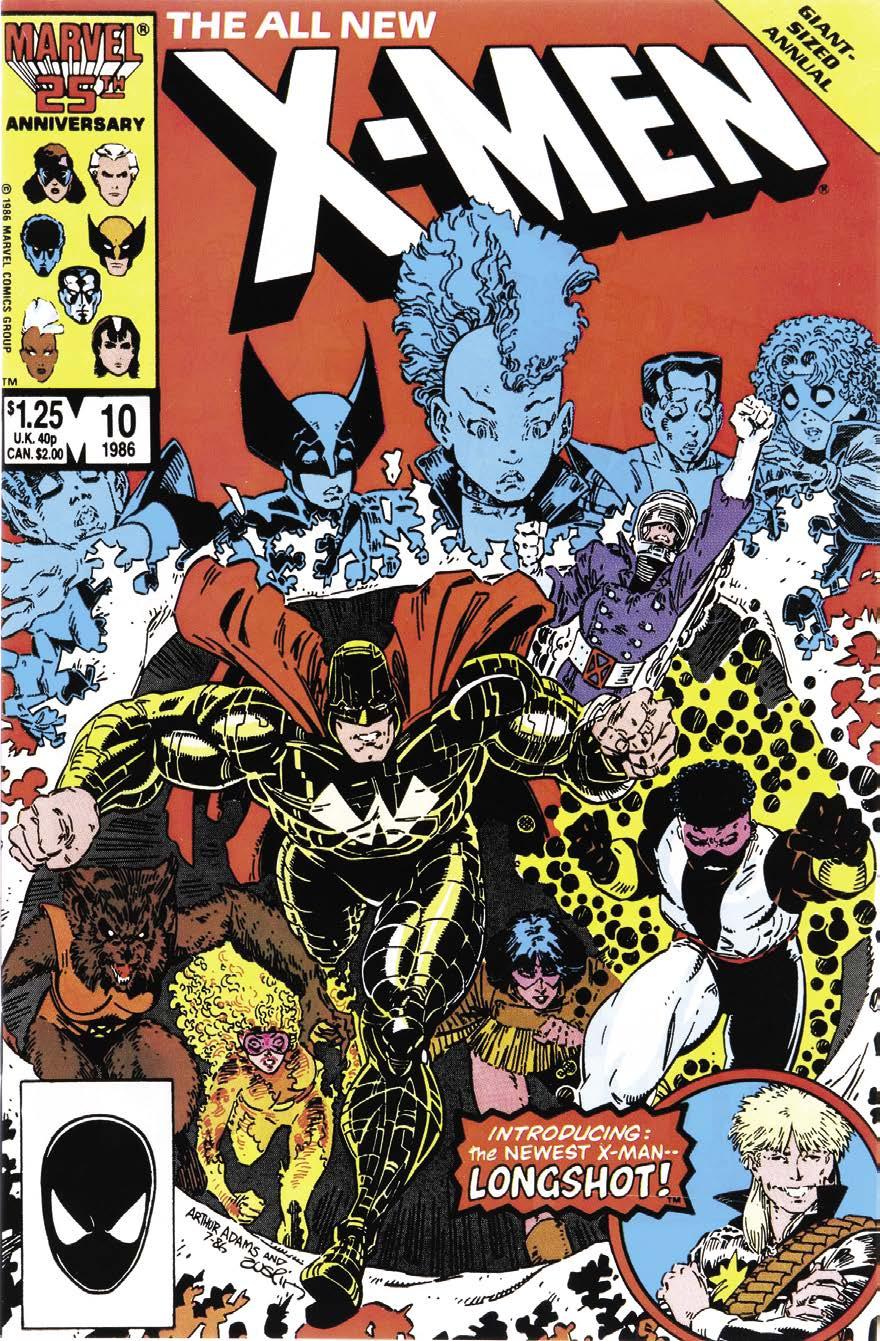
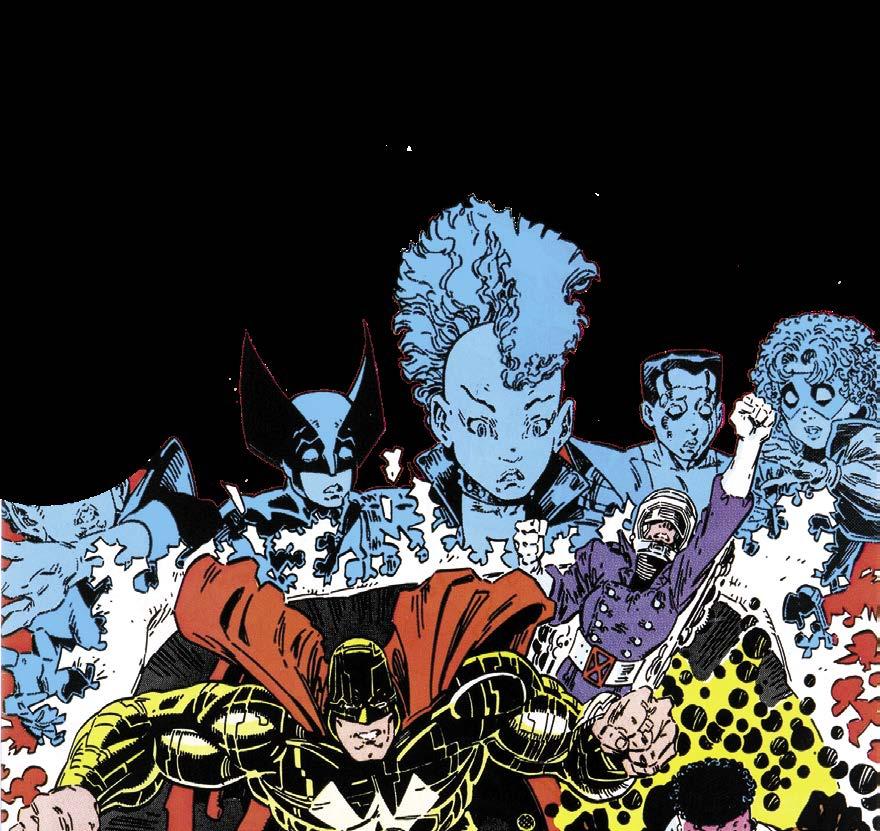
Mite-Sized Mutants
Readers met the X-Babies in X-Men Annual #10 (1986). Its cover, by the one and only Arthur Adams, homages 1975’s Giant-Size X-Men #1 cover. (title above) Crayon artwork prepared specially for BACK ISSUE by Addisyn Fowlks.
TM & © Marvel. Big Baby Issue • BACK ISSUE • 69
Christopher Larochelle
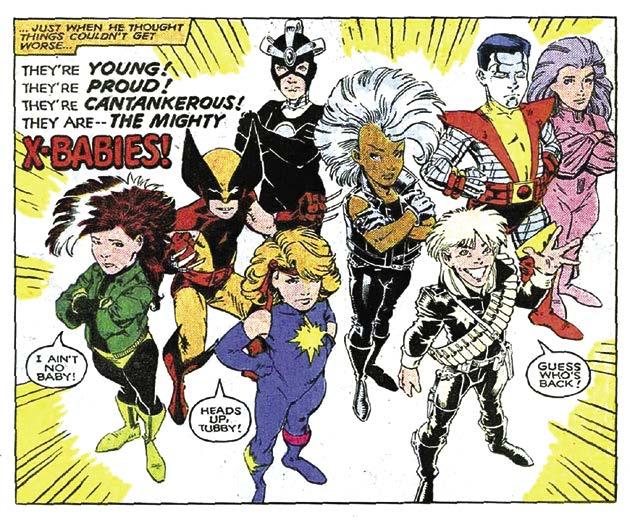
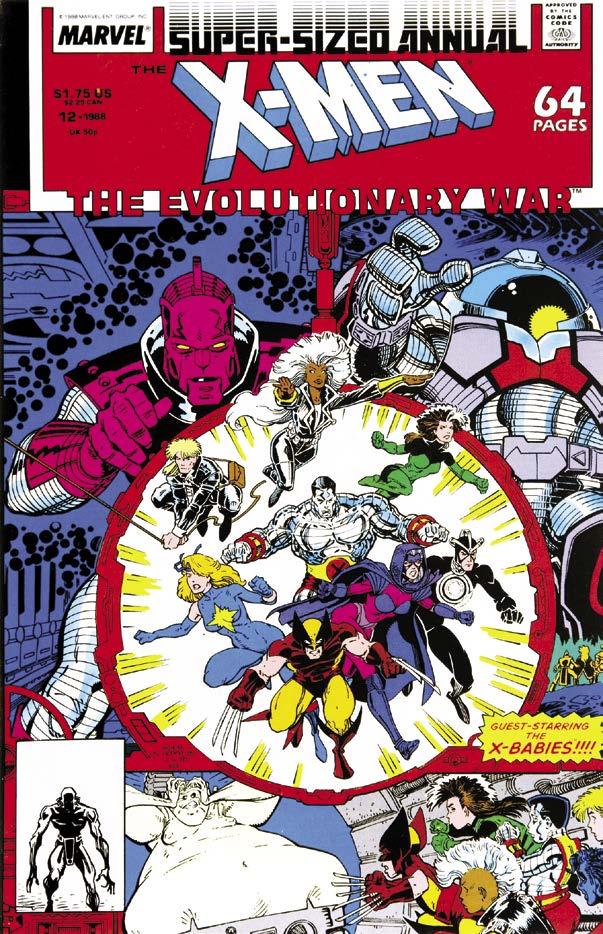
“We don’t perform… unless we get what we want!”
1986: the year that brought Frank Miller’s Dark Knight, Alan Moore and Dave Gibbons’ Watchmen, and many more signs that American comics were suddenly getting a little darker all around. In Marvel’s X-Men line, the “Mutant Massacre” crossover [the subject of an article forthcoming in BI #161—ed.] played out, bringing new foes to the stories who pushed the X-Men and their allies to the limit in a tale that featured quite a bit of indiscriminate slaughter, lasting and drastic changes to characters, and an overall sense of foreboding to the stories of Marvel’s mutant teams. Fans of the X-Men might very well point to the “Mutant Massacre” as being where their favorite series acquired an extra helping of darkness that never went away.
However, writer Chris Claremont’s singularly impressive run from 1975 to 1991 on X-Men didn’t succeed because of any kind of “rinse and repeat” strategy. No, Claremont’s run is full of variety, and some welcome levity arrived in Uncanny X-Men Annual #10 (cover-dated Jan. 1987 but released in Sept. 1986), a special issue that was released as the Mutant Massacre storyline was trickling out in individual issues.
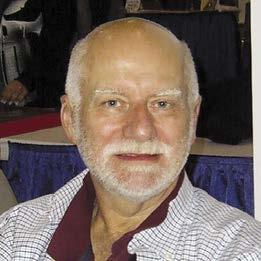
Yes, it was the X-Babies that allowed Chris Claremont and artist Arthur Adams to stretch out and tell a story that has as much humor in it as the Mutant Massacre tale has gloom. In “Performance,” the X-Men and the New Mutants join forces against the threat of Mojo, a villain who up to that point had only been seen in the Longshot miniseries (Adams’ big break into comics, written by Ann Nocenti). Mojo has an idea for introducing havoc into the X-Men’s lives by teleporting Longshot directly into the heroes’ training area, the Danger Room. Arriving in a strange balloon of ectoplasm that bursts on the whole team, Wolverine knows something bad will follow: “Weird scent on this goop makes me edgy.” It turns out that all who made contact are soon regressing into baby versions of themselves. In the midst of a double-sized Annual story, the baby versions of the X-Men truly don’t get the spotlight for too many pages. They are soon restored to adulthood during a battle with the New Mutants, who suited up to save their friends. The story in Annual #10 really does come across as a “testing of the waters” for expanding the idea of these characters later on down the line.
An easy argument can certainly be made that the true debut of the X-Babies was in Uncanny X-Men Annual #12 (1988). Since the previous story was about the regular X-Men being turned into babies, this second story is where readers find what would prove to be the lasting concept: the X-Babies are performers who are made by Mojo himself to be his biggest stars. Again, it’s Chris Claremont and Arthur Adams who tell the story in “I Want My X-Men!” This brief story only runs for 14 pages, but it’s jam packed with the kind of zany fun that
School for Gifted Goo-Goos
X-Men Annual #12 (1988), reintroducing the X-Babies. Cover art by Arthur Adams.
70 • BACK ISSUE • Big Baby Issue
TM & © Marvel.
chris claremont
© Luigi Novi / Wikimedia Commons.
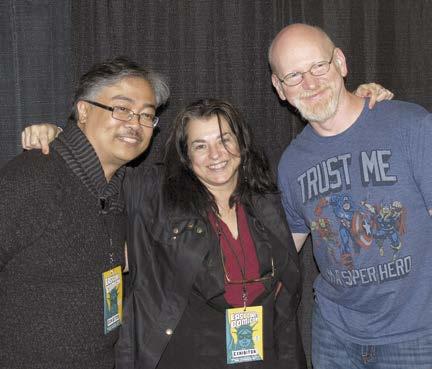
Their Reunion Was a Longshot
Longshot creative team Whilce Portacio, Ann Nocenti, and Arthur Adams, at a 2015 convention.
© Luigi Novi / Wikimedia Commons. IF
Mojo’s appearances are known for. In this tale, Mojo has a real problem on his hands: the X-Men, the biggest stars for his media empire, are now dead (yep—it was another X-Book crossover called “Fall of the Mutants,” and nope—the X-Men weren’t really dead). The X-Men can no longer be captured on video, through photos, or picked up on by any technological means, so it really is difficult to track them down.
As Mojo’s servile assistant, Major Domo, puts it: “You’re a victim, Mojo, of your own success. You’ve created an insatiable demand for X-Men product. But the audience isn’t satisfied with reruns… they want original programming.” Mojo doesn’t know how to solve his little problem, and he calls in some advisors… all of whom certainly bear a strong resemblance to people involved on the other side of the fourth wall! Chris Claremont, Ann Nocenti, Arthur Adams, Bob Wiacek, Tom Orzechowski, and Bob Harras are all there to make comments, and it’s Ann who says that replacement X-Men might just do the trick. Mojo quickly passes this off as his own idea, and much of the rest of the story is made up of Mojo reacting to various riffs on the general concept. An X-Men team made up entirely of X-Women, with the male characters all genderbent? Mojo isn’t impressed. X-Men Transformers? Again, rejected. X-Men in “naughty” attire… antrhopomorphic X-Men… all are not quite cutting it for the ratings-minded Mojo. Far more possibilities are mentioned in Claremont’s narration than can be seen in Adams’ art, but things come to a standstill as the author declaims: “Just when he thought things couldn’t get worse… they’re young! They’re proud! They’re cantankerous! They are—the Mighty X-Babies!” Mojo’s main concern for the rest of this short story is trying to round up and maintain some semblance of control over his latest “stars.”

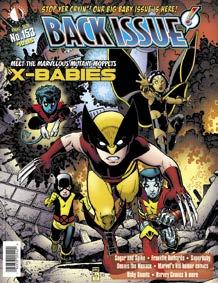
Speaking with George Khoury and Eric NolenWeathington in the fantastic Modern Masters:
Arthur Adams book published by TwoMorrows in 2006, the artist credited with bringing the X-Babies into existence was asked if the characters were his idea. Emphatically, Adams replied in the negative. “Those were Claremont. Claremont called up and thought that this would be a great merchandising idea for Marvel to do X-Babies. I think someone might have given either him or Dave Cockrum a little baby version, a stuffed doll of Nightcrawler. Chris thought that would be a great idea to get Marvel to do all of the X-Men characters as these weird little baby characters. Heck, I think this may even have been before Japanese toy companies started doing their various super-deformed characters. You know, with all the cute-sified, little big-headed things.” According to Adams, “that apparently did all start out as a scam by Chris to get some X-Men merchandise going. Which, of course, Marvel never, ever did. We don’t know why.”
Rough Stuff
A pencil sketch by Arthur Adams, circa the mid-1980s but signed by the artist in 2006, of the X-Babies and Spiral, with a mirthful Mojo sketch in the top corner. Courtesy of Heritage Auctions (www.ha.com).
& © Marvel. Big Baby Issue • BACK ISSUE • 71
X-Men TM
YOU ENJOYED THIS PREVIEW, CLICK THE LINK TO ORDER THIS ISSUE IN PRINT OR DIGITAL FORMAT! BACK ISSUE #153 BIG BABY ISSUE! X-Babies, the last days of Sugar and Spike, FF’s Franklin Richards, Superbaby vs. Luthor, Dennis the Menace Bonus Magazine, Baby Snoots, Marvel and Harvey kid humor comics, & more! With ARTHUR ADAMS, CARY BATES, JOHN BYRNE, CHRIS CLAREMONT, SCOTT LOBDELL, SHELDON MAYER, CURT SWAN, ROY THOMAS, and other grown-up creators. Cover by ARTHUR ADAMS (84-page FULL-COLOR magazine) $10.95 (Digital Edition) $4.99 https://twomorrows.com/index.php?main_page=product_info&cPath=98_54&products_id=1788
















 by John Wells
by John Wells

























 by Alissa Marmol-Cernat
by Alissa Marmol-Cernat








